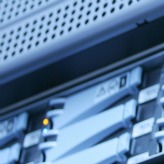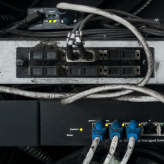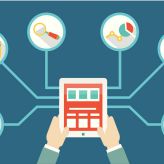 2016 was the year when Google Now was replaced by Google Assistant, a virtual hub that can make mobile device users’ lives a lot easier. Here are some ways it can ease up your workload.
2016 was the year when Google Now was replaced by Google Assistant, a virtual hub that can make mobile device users’ lives a lot easier. Here are some ways it can ease up your workload.
Locate the best route to any location
Google Assistant works seamlessly with Google Maps, which makes it a great tool for finding the best route to any location.
For instance, if you’re trying to find the best route home, just turn on the app and say, “Get me home.” It will then work with Google Maps to let you know the ideal route based on your current location.
You can also check for traffic updates with Google Assistant, and get the latest information on road closures and traffic diversions. This feature is perfect for people who are often on the move.
Make a shopping list with your voice
Google Assistant can also help you make shopping lists with ease — just “talk” to the app.
To do this, open the app and say, “Add [item] to my shopping list.” Google Assistant will then collate all the items on your shopping list and read it back to you for good measure.
Stay updated with the latest news
Too busy to browse the day’s news? Why not have Google Assistant read them for you? If you say “Play the news,” Google Assistant will begin reading the stories from news sources you have saved in your RSS feeds, social media accounts, etc.
You can make Google Assistant play, pause, and stop reading at any time, as well as request it to read articles from a particular source or media site.
Take control of your smart home
If you’re enhancing your living space with smart devices like ovens, light bulbs, or thermostats that operate automatically, Google Assistant can help you easily control them. For example, you can say, “Okay. Google, turn off lights in the living room.”
To activate Google Assistant, tap on the menu icon at the upper-right section of the screen and choose Settings. You can then add the smart devices in your house that are compatible with your app.
Measurement and currency conversions and language translation
You can also use Google Assistant to convert measurements, currencies, and other data. You can even ask it to get exchange rates between the US dollar and a foreign currency. Just say, “What is 12 US dollars in euros?” The trusty assistant also has a nifty language translation feature.
Check the email inbox and appointments calendar
If you’re using Google Assistant, chances are you’re using other services like Gmail or Google Calendar, so why not use your voice-activated helper to connect to these apps?
You can ask Google Assistant to skim through your Gmail inboxes for target keywords, or pull up a recently added appointment in your Calendar app. Google Assistant can also work with your Google Keep app, which is handy for taking down notes.
These are just a few of the things Google Assistant can do for you. If you have questions about this tool, get in touch with our experts who are ready to help you.

 Before there was Google Assistant, there was Google Now. In 2016, it replaced Google Now as the virtual assistant (VA) in the Google app for Android and iOS. The updated VA offers plenty of functionalities to Google device users. Here are a few that you should take advantage of.
Before there was Google Assistant, there was Google Now. In 2016, it replaced Google Now as the virtual assistant (VA) in the Google app for Android and iOS. The updated VA offers plenty of functionalities to Google device users. Here are a few that you should take advantage of. Google Assistant was launched in 2016 as an enhanced version of Google’s previous virtual assistant (VA), Google Now. It improved on Google Now’s features, and those who use Google-powered devices certainly have a lot to gain. What functionalities can you expect from the search giant’s AI-powered virtual assistant? Read on and find out.
Google Assistant was launched in 2016 as an enhanced version of Google’s previous virtual assistant (VA), Google Now. It improved on Google Now’s features, and those who use Google-powered devices certainly have a lot to gain. What functionalities can you expect from the search giant’s AI-powered virtual assistant? Read on and find out. If you’re thinking about replacing a server for your small business, then that probably means your company is experiencing success and is starting to grow. That’s great news. But is it really time to invest in a new one? Or does waiting too long risk slowing your business down? Either way, it’s important to consider your decision carefully. As a business owner, you should take the time to answer the following questions before deciding on your aging server.
If you’re thinking about replacing a server for your small business, then that probably means your company is experiencing success and is starting to grow. That’s great news. But is it really time to invest in a new one? Or does waiting too long risk slowing your business down? Either way, it’s important to consider your decision carefully. As a business owner, you should take the time to answer the following questions before deciding on your aging server. While you’re still alive and kicking, your heart should never skip a beat. It’s the same with your servers. They’re always working, ensuring your business stays operational even if you don’t pay attention to them. However, business owners tend to overlook their servers as most times it is a simple case of being out of sight, out of mind. This is a dangerous way of thinking because once your servers go down, you could start losing money and maybe even go under. Even if your servers seem to be running smoothly, do yourself a favor and consider these three questions.
While you’re still alive and kicking, your heart should never skip a beat. It’s the same with your servers. They’re always working, ensuring your business stays operational even if you don’t pay attention to them. However, business owners tend to overlook their servers as most times it is a simple case of being out of sight, out of mind. This is a dangerous way of thinking because once your servers go down, you could start losing money and maybe even go under. Even if your servers seem to be running smoothly, do yourself a favor and consider these three questions. Servers need to be replaced and/or upgraded at some point. The older the servers are, the harder they become to maintain because finding replacement parts become more time-consuming and costly. What’s more, you could be missing out on new features that could benefit your business if you don’t upgrade your servers. To help you decide if it’s time to replace your server, here are some guide questions.
Servers need to be replaced and/or upgraded at some point. The older the servers are, the harder they become to maintain because finding replacement parts become more time-consuming and costly. What’s more, you could be missing out on new features that could benefit your business if you don’t upgrade your servers. To help you decide if it’s time to replace your server, here are some guide questions. Dashboards allow you to better understand your customers and easily make informed business decisions. But with many types of dashboards out there, each serving a unique purpose, how do you determine which one is best for your company? We’ve listed three types of the most widely used dashboards below.
Dashboards allow you to better understand your customers and easily make informed business decisions. But with many types of dashboards out there, each serving a unique purpose, how do you determine which one is best for your company? We’ve listed three types of the most widely used dashboards below. Dashboards have become extremely useful tools for companies to make the most of their raw data. With proper implementation, a dashboard can display essential information in an easy-to-understand format, allowing business owners to easily make informed decisions. But a dashboard can say a lot of things depending on its setup, and it’s important to choose one that can best serve your purpose. Here are three types of business dashboards to consider.
Dashboards have become extremely useful tools for companies to make the most of their raw data. With proper implementation, a dashboard can display essential information in an easy-to-understand format, allowing business owners to easily make informed decisions. But a dashboard can say a lot of things depending on its setup, and it’s important to choose one that can best serve your purpose. Here are three types of business dashboards to consider. A dashboard is a single display that provides all the information you need to make important business decisions and manage your company. While dashboards are generally helpful, you need to choose the one that works best for your company’s objectives and goals. Here are three types of business dashboards to consider.
A dashboard is a single display that provides all the information you need to make important business decisions and manage your company. While dashboards are generally helpful, you need to choose the one that works best for your company’s objectives and goals. Here are three types of business dashboards to consider. Wearable technology seems like something out of a Hollywood sci-fi movie. And mobile apps are not too far behind when it comes to converging human and artificial intelligence. The good thing is that these two are great examples of how today’s technology has significantly improved patient care. With the many benefits of wearable technology and mobile apps, consumers and healthcare providers find themselves divided over choosing one over the other.
Wearable technology seems like something out of a Hollywood sci-fi movie. And mobile apps are not too far behind when it comes to converging human and artificial intelligence. The good thing is that these two are great examples of how today’s technology has significantly improved patient care. With the many benefits of wearable technology and mobile apps, consumers and healthcare providers find themselves divided over choosing one over the other. Are you overwhelmed by the many choices you have in getting the right technology to monitor your health? Do you download an app on your mobile to track your pulse rate? Or buy a wearable device that can tell you more about your health? While it’s best to leave the professional recommendations to your healthcare provider, it would be great if you’re also in the know, so you have a better idea of what suits you.
Are you overwhelmed by the many choices you have in getting the right technology to monitor your health? Do you download an app on your mobile to track your pulse rate? Or buy a wearable device that can tell you more about your health? While it’s best to leave the professional recommendations to your healthcare provider, it would be great if you’re also in the know, so you have a better idea of what suits you. The healthcare industry has been taking advantage of technology. Patients are now more empowered, with plenty of options and tools within their reach. Healthcare professionals now find themselves adjusting their technology to their patients since no medical scenario is exactly the same. And with apps and wearable technology, patients have faster and better options to monitor their health.
The healthcare industry has been taking advantage of technology. Patients are now more empowered, with plenty of options and tools within their reach. Healthcare professionals now find themselves adjusting their technology to their patients since no medical scenario is exactly the same. And with apps and wearable technology, patients have faster and better options to monitor their health.